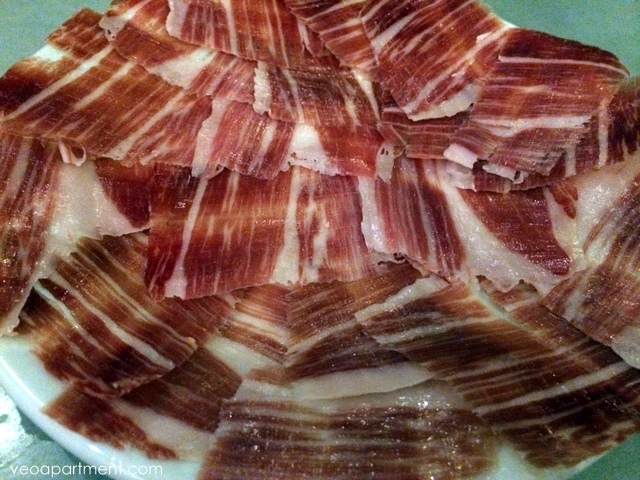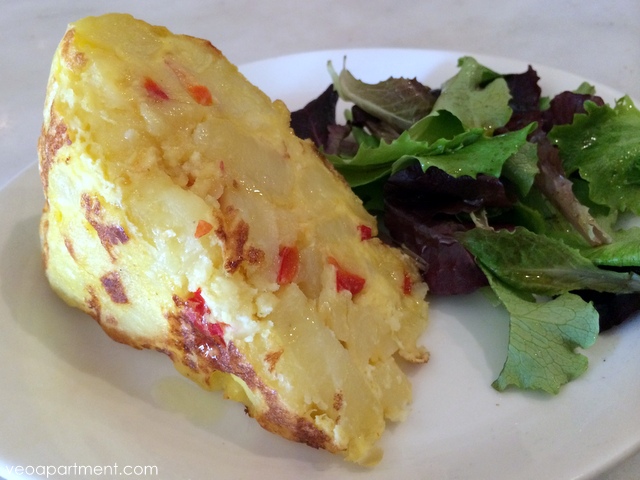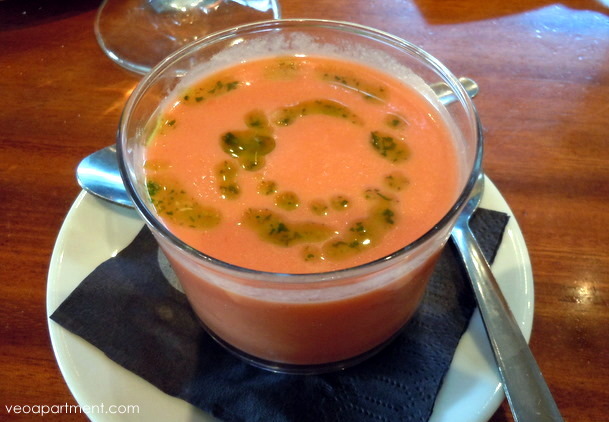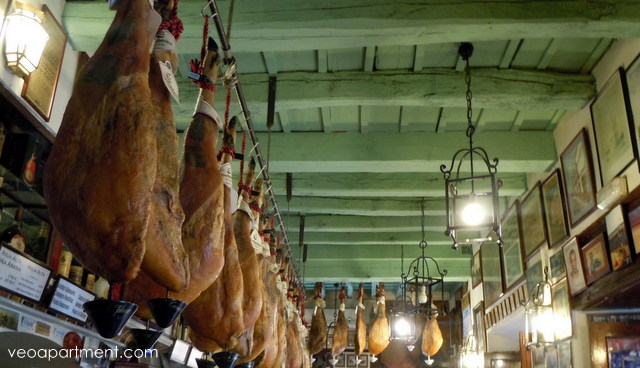People often ask me questions like “What is your favourite tapa?”, to which I usually answer “what’s your favourite song?”. Obviously it’s impossible to choose just one, but I can tell you about the most typical/popular tapas (or foods in general) that people eat here. And so, in response to popular demand, this is a list of 10 very typical – and delicious – Spanish tapas. It’s not definitive. It has a regional bias towards Andalucia (no Pulpo a la Gallega, no Paella, no Fideuá), and some personal biases too (no Ensaladilla Rusa or Callos a la Madrileña). And there’s plenty of common dishes not included because this is a top ten, not a top fifty.
 jamón Ibérico de Bellota
jamón Ibérico de Bellota
Cured ham Jamón is close to being a national obsession in Spain. Hams can be seen hanging from the rafters in all the best bars, and every tapeo should begin with a plate of it served in those wafer thin slices. The best quality is Iberico, made from the Spanish black-footed pig (pata negra), but Serrano is good too.
Fresh Anchovies (boquerones) The Spanish and Portuguese are said to eat more fish and seafood than any other people on earth, except the Japanese and Icelanders. One of the most popular fish is boquerones, which are either fried in batter al limón, or marinated in vinegar. Delicious either way and nothing like the tinned variety you may be used to.
Tortilla de Patatas I was in two minds whether to include this as it’s so not exotic, but it’s so typical I felt I had to. A traditional thick potato omelette, though it can be made with other vegetables too, cooked to a firmer texture than a typical English omelette (although some people prefer a more runny centre) and cut into slices. Comfort food goodness.
 tortilla de patatas
tortilla de patatas
Croquettes These really don’t need much explanation, except to say that they are unlike the French variety, with bechamel instead of potato, and various fillings (ham, mushroom, cheese etc), rolled in breadcrumbs and deep fried. The best are satisfyingly crunchy.
Pavia de Bacalao Bacalao (cod), usually salted, is one of the staples of Spanish cooking. Pavia is a traditional battered cod (a bit like the fish in fish and chips), crispy and crunchy on the outside and flaky on the inside, but bacalao can be served in dozens of different forms.
Solomillo al Whisky Pork sirloin grilled and served with a whisky and garlic sauce. Can be served with other sauces, but this is the best.
Gazpacho is the best known of the Spanish cold soups that are so refreshing on a hot summer’s day, although I’m making it do duty here for cold soups in general. The majority of these are tomato based (my favourite is actually salmorejo, served with a garnish of chopped boiled egg and jamón), but you should also try ajo blanco, the white garlic and almond soup that’s the oldest known cold soup variety.
 a cold cup of gazpacho
a cold cup of gazpacho
Gambas al Ajillo Prawns in sizzling hot oil and garlic, with the odd red chili pepper thrown in for a bit of bite. Prawns are ubiquitous in the tapas bars, and come in all shapes, sizes and methods of preparation, but I think this is the most “Spanish”.
Meatballs (albondigas) Usually pork, sometimes beef, and quite often (albondigas being broader in meaning than meat balls) seafood, especially chocos (cuttlefish), served in a thick sauce, either gravy or tomato based. Like a lot of traditional dishes it was originally an economical filler- and nothing wrong with that.
Pork cheeks (Carrillada or Carrillera) Possibly my favourite tapa (though it’s a close call), pork cheeks are braissed on low heat for three hours or more until they’re super tender, and served in a sauce made from their own juices, garlic, and whatever else the bar’s secret recipe calls for. Miss this one and you’ll regret it forever.
Find out more about tapas and the art of the tapeo over here.
